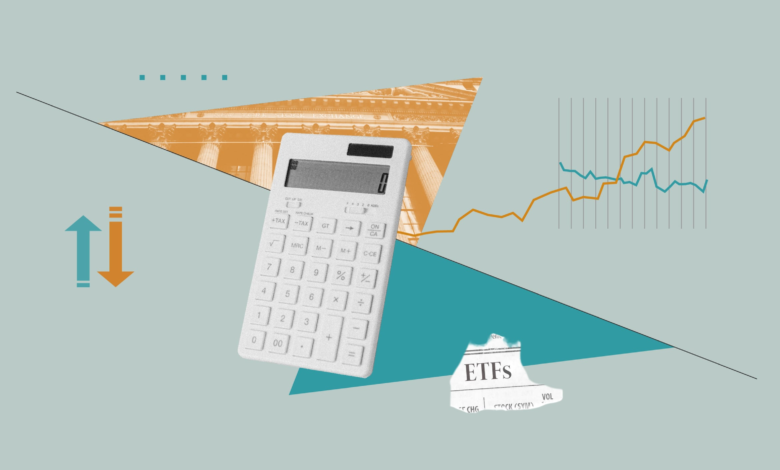You Might Not Always Get the Returns Your Active ETF Earned

Investing in actively managed funds goes beyond picking talented portfolio managers. Success also depends on spotting the subtle ways your returns can be chipped away. Fees are a universal watchpoint. But as explored in this year’s Guide to Active ETF Due Diligence, active exchange-traded funds carry other, less obvious costs—among them bid-ask spreads and market-price deviations from the value of their underlying holdings.
Consider the experience of an investor buying Nuveen Sustainable Core ETF on April 24, 2025, and selling on May 15, 2025. Over that stretch, the fund’s net asset value rose 10.5%. That’s an excellent result, outpacing the SPDR S&P 500 ETF (a popular tracker of the fund’s prospectus benchmark) by 0.38%.
But those who traded on those exact dates didn’t enjoy the full benefit. On April 24, the ETF traded at a 0.28% premium to its NAV. By May 15, it was trading at a 0.07% discount. That round-trip cost investors 0.35%, limiting investors to an indexlike return. Had they sold on June 16, the penalty would have been worse (that day, the ETF traded 0.11% below NAV).
This slippage isn’t relevant to mutual fund investors who transact once per day at NAV and don’t pay bid-ask spreads. And for passive ETFs like the SPDR S&P 500, trading prices rarely stray more than 0.10% from NAV. But for active ETFs, such deviations—though often minor and with valid causes—can take a meaningful bite out of returns if neglected or misunderstood.
Why Prices Drift From NAV
Most ETFs trade within a hair’s breadth of their NAV thanks to ETFs’ arbitrage mechanism. Any premium or discount that arises presents a profitable opportunity for authorized participants, which are the specialized institutional investors allowed to create and redeem new ETF shares directly with a fund’s sponsor by exchanging a predetermined basket of securities and/or cash for new ETF shares, and vice versa. If an ETF’s market price strays too far from the aggregate price of its underlying securities, APs have the incentive and ability to bring them in line.
For example, if the component securities of a given index are worth $49.99 per ETF share and the ETF’s shares are changing hands for $50.49 each, an AP can deliver that basket of securities to the ETF provider in exchange for new ETF shares and subsequently sell the new ETF shares on the open market. The AP will pocket a small profit for the effort (which will likely be less than $0.50 per ETF share given the costs involved in this process). As APs compete for these opportunities to make a quick low-risk profit, they serve to minimize the size and persistence of premiums and discounts for the fund’s shares.
Most active ETFs often trade within 0.15% of their NAV. But some of their features (and flaws) can lead to more sizable or volatile deviations.
Premiums and Discounts Can Be Inherent to an Asset Class
Actively managed bond ETFs often trade at modest premiums—typically 0.07% to 0.15% above NAV—which in large part reflects quirks of bond pricing. Bonds are not priced like stocks. The prices for bonds that are plugged into ETFs’ NAVs are based on bonds’ bid prices—the highest prevailing price that someone was willing to pay for the bond at the time the data was captured. ETFs’ closing prices are set at the midpoint between their last bid and offer prices.
When Stale Prices Meet Fresh News
US-listed ETFs that invest overseas are more prone to wider and more volatile premiums and discounts, especially those holding international or emerging-market stocks. A reason lies in timing. ETFs trade throughout the US equity market’s trading day. But the securities they hold might be listed in Tokyo or Frankfurt—markets that are closed while American investors are trading. By the time the fund’s NAV is calculated at 4 p.m. Eastern time, it reflects stale prices from earlier foreign-market closes.
ETFs’ market prices incorporate fresh news—geopolitical shocks, economic data, or swings in local markets. This process, called price discovery, means the ETF price reflects where investors expect the underlying securities to open next. The resulting premium or discount is not a sign of dysfunction, but of a market working to stay current.
Arbitrage Isn’t Always Instant
Even when premiums or discounts emerge, APs don’t always act. If the ETF’s underlying securities are illiquid or costly to trade, the arbitrage profit may be too slim to justify the risk. But high-quality sponsors of active ETFs, such as JPMorgan or Capital Group, are not idle bystanders. By managing the liquidity of the fund’s underlying holdings and thoughtfully designing creation and redemption baskets, they can play a direct role in stabilizing their funds’ trading behavior and reducing arbitrage frictions.
Custom baskets allow ETF managers to handpick which securities go in or out of the fund when shares are created or redeemed, rather than requiring a strict pro rata slice of the entire portfolio. Unlike pro rata baskets—which mirror the fund’s holdings in fixed proportions—custom baskets give managers flexibility to include more liquid assets and exclude hard-to-trade ones. This helps ease the burden on APs and encourage more consistent pricing relative to NAV.
Market Conditions Matter
Arbitrage works best during calm markets to keep ETF prices tethered to NAV. In turbulent times, that tether frays. Market makers and APs retreat as risk swells and hedging becomes more expensive. ETFs’ bid-ask spreads widen, and premiums and discounts to NAV become larger and more erratic.
The challenge is greatest for active ETFs holding illiquid or obscure assets. The underlying securities’ pricing becomes less certain, and they may be thinly traded or difficult to source. When stress hits and liquidity dries up, APs may wait for wide mispricings before stepping in—if they do at all. Until then, ETF prices can drift far from the value of what they hold.
What Matters Most to Active ETF Due Diligence
A low average premium or discount is nice, but consistency matters more. A steady 0.20% premium is preferable to a lower figure that swings from positive to negative unpredictably and often. Due diligence should focus on the volatility of a fund’s price/NAV gap over time, not just averages.
Past behavior is a useful guide: Active ETFs that have traded steadily tend to continue doing so. For active ETF investors, keeping a close eye on these patterns isn’t just prudent—it’s essential.






